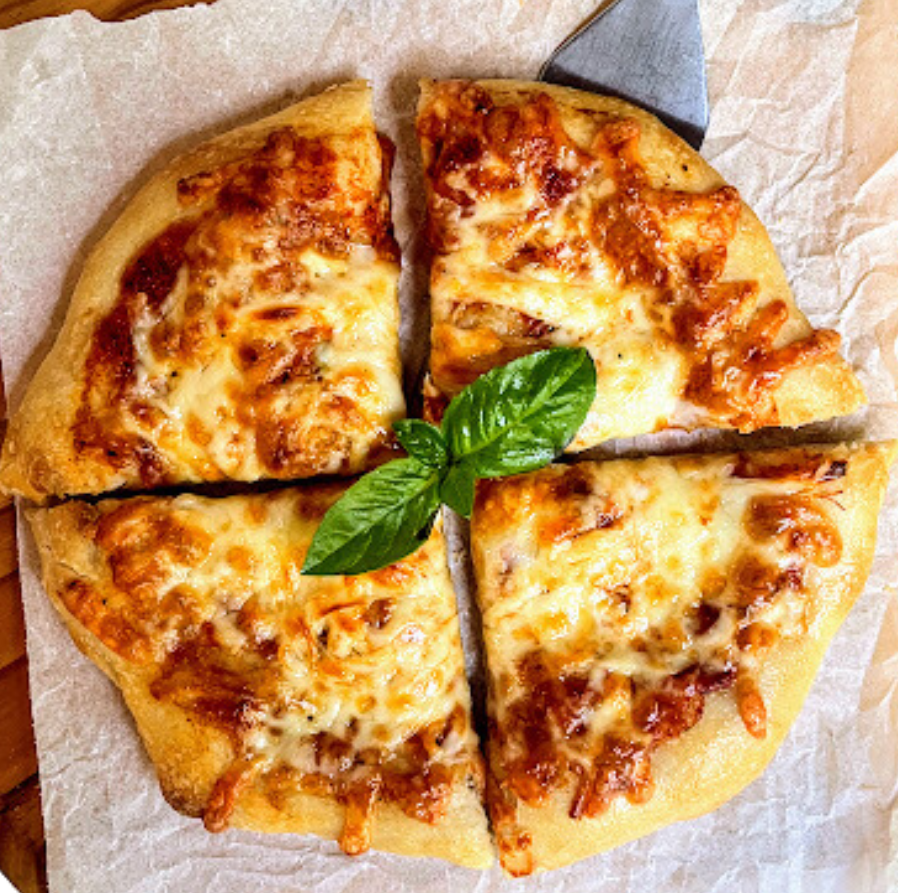
Looking for Sourdough Pizza Dough Tips? We've updated our content to better serve your baking needs!
For comprehensive guidance on making pizza dough with sourdough discard, please visit our detailed blog post here. If you're interested in freezing sourdough pizza dough, check out this post, for all the tips and tricks you need to master freezing dough.
Ready to Make Sourdough Pizza Crust?
This pizza dough? It's hands down the absolute best, and here's why it's like no other.
First off, let's talk about the chewy crust that comes from using sourdough starter in your dough. It's pure pizza perfection!
Then, there's the fresh toppings. Garden tomatoes, fresh basil, and a drizzle of extra virgin olive oil are next level. But the real game-changer here is that unmistakable sourdough flavor. It's like magic how it elevates your pizza to a whole new league. This recipe is the undisputed sourdough pizza crust champion, and you're about to taste exactly why.
Keep reading to learn how you can par-bake pizza crust to get the perfect balance of a crispy exterior and a tender interior. Plus, it's a game-changer when it comes to sliding your pizza into the oven. No more fumbling with transferring the pizza dough onto the baking stone.
How to Make the Best Sourdough Pizza
When it comes to crafting the perfect sourdough pizza crust, the secret starts with pure and simple ingredients, but here's the deal: it's all about high quality.
Now, I can't stress this enough – don't even think about substituting all-purpose flour in this recipe. High-quality bread flour is the superstar here, and it's worth every penny. This flour is what takes this recipe from good to absolutely incredible. It's the key to achieving that chewy, dreamy crust.
Remember: go for the best bread flour you can find. Trust me; your taste buds will thank you later.
Use high-quality ingredients
- Bread flour (I like King Arthur bread Flour)
- Sourdough starter
- Salt
- Water
Mix your pizza dough by hand
Now, let's talk about why this dough is an absolute breeze to mix. All you need is a large mixing bowl and a wooden spoon. Or, if you've got one, my personal favorite, is the Dutch whisk. I like the Dutch whisk because it effortlessly kneads the ingredients together, creating a smooth and cohesive dough in no time.
No fancy gadgets, no complicated techniques – just pure simplicity and efficiency.
- Large mixing bowl
- Dutch whisk (optional)
- Pizza stone and pizza peel (helpful, but not required)
I'll explain a little more about why I prefer to mix this sourdough pizza crust recipe by hand in the Tips For Proofing section below.
Top with fresh, delicious toppings
When it comes to toppings for this pizza, the possibilities are mouthwatering. My personal favorite toppings are a dollop of homemade pizza sauce, creamy fresh mozzarella cheese, and freshly picked basil leaves.
Here are a few other popular topping ideas:
- Pepperoni slices
- Sautéed mushrooms
- Sliced bell peppers
- Red onion rings
- Fresh spinach leaves
- Sliced black olives
- Cooked Italian sausage
- Artichoke hearts
Mix and match to create your perfect pizza masterpiece!
Step-by-step Tutorial for Making this Sourdough Pizza Dough Recipe
- Feed your starter about 6-8 hours before using.
- Place the ingredients in a large mixing bowl.
- Mix with a spoon or Dutch whisk until the ingredients are well combined.
- Turn the dough out onto a clean countertop. I use my hands to knead the dough until it's smooth and elastic, which takes about 5 minutes. If you prefer to use your mixer and a dough hook attachment, that will also work.
- Cover the dough with plastic wrap and let the dough rise.
💡Pro Tip: Start the dough early (8 hours before you want to eat).
Tips for Proofing Sourdough Pizza Dough
Remember that natural starters are slower-acting which means that sourdough pizza crust needs more time to proof.
Here's Why: Sourdough starters contain wild yeast and bacteria that work at a slower pace than commercial yeast. These microorganisms need extra time to ferment and create carbon dioxide, which makes the dough rise. This is why we need to allow for a longer proofing period.
I prefer the more gentle process of folding the dough instead of excessively kneading it.
Here's Why: To help develop the dough's structure and strength during the initial proofing( aka bulk fermentation), I fold the dough 1-2 times. Folding the dough means gently lifting and stretching it, then folding it back onto itself. This process helps develop the gluten and redistribute the yeast. During the process of folding, you'll see the dough transform from a shaggy mass to a smooth and elastic dough.
How to Par-Bake Sourdough Pizza Crusts
Par baking, which stands for "partial baking," is a way of cooking where you partly the bake pizza crust before you put on the toppings on it. Par-baking is awesome because you get that crispy crust we all love, and It makes sliding your pizza into the oven a breeze.
I've made this recipe 100's of times. Sometimes I make one large pizza for the family to share, and other times I divide it into mini pizzas. It's also great when you want to throw a pizza party and let your guests choose their toppings. But my favorite way to make it is to par-bake the pizza crusts in advance so that we can have great pizza any night of the week.
Here are the steps to par-bake your pizza crust:
- Turn the proofed dough out onto a floured work surface
- Divide the dough depending on the size pizza you are making.
- Gently round each piece into a tight ball.
- Put a little flour and a towel over the top of the dough and let it rest for about 20-30 minutes
- Shape each piece of dough into a round shape that is a little thicker around the outside edge. (Picture a steering wheel)
- Lay the dough onto a parchment-lined baking sheet and bake at 350 degrees for about 8 minutes.
- When you're ready to bake, place your par-baked crust on a wooden peel or piece of parchment and add your favorite toppings.
- Bake the topped pizza for an additional 8-10 minutes at 450 degrees, (or until the cheese is lightly brown and bubbly).
Not into parbaking your pizza? No worries. Keep reading for step-by-step instructions to bake your fresh dough and toppings together.
How to Bake Sourdough Pizza
You don't have to parbake your pizza crust if you're feeling adventurous and want to simplify things. You can take your dough, shape it into your desired pizza shape, add your fresh and flavorful toppings, and then slide it straight into the oven.
Here's how to go about it:
- Preheat your oven to 450°F.
- Place a pizza stone in the lower ⅓ of the oven.
- Roll out the dough to the desired thickness.
- Lift the dough onto a piece of parchment paper.
- Top your pizzas with desired toppings.
- Bake at 450 degrees for 10-15 minutes for individual pizzas or 20-25 minutes for a large.
Sourdough Pizza FAQ's
Can I refrigerate the dough before I use it?
Yes, you can refrigerate your sourdough pizza dough. It's a great option if you want to plan ahead or if you're not ready to use it right away. Click here to learn two different ways to freeze sourdough pizza dough.
Why do I need to let my dough come to room temperature before I shape it for my sourdough pizza crust?
Because room-temperature dough balls are easier to work with. Cold dough tends to be stiffer and less pliable, making it challenging to stretch into your desired pizza shape.
What is a bench scraper, and how does it help with sticky dough?
A bench scraper is a handy tool that's especially useful when working with high-hydration dough, which can be sticky. It's essentially a flat, rectangular piece of metal or plastic with a handle. The scraper allows you to lift and move sticky dough without sticking to your hands or the work surface, making the dough-handling process much easier.
What's the difference between baking steel and baking stone, and which one should I use in my home oven?
Baking steel and baking stone serve similar purposes, but there are differences. A baking steel retains heat more effectively than a stone, which means it stays hot for longer. This makes it ideal if you're making multiple pizzas back-to-back. A stone is a great choice for occasional pizza making. The choice depends on your baking habits and how many pizzas you plan to make at once.
Do I need a pizza peel to make homemade sourdough pizza?
Nope, you don't need a pizza peel! Here's a simple trick: prepare your pizza crust on a sheet of parchment paper. When it's time to transfer your pizza to the oven, place the parchment paper, with the pizza on top, directly onto the hot stone or steel surface in your oven. It's an easy and effective method that doesn't require any special tools.
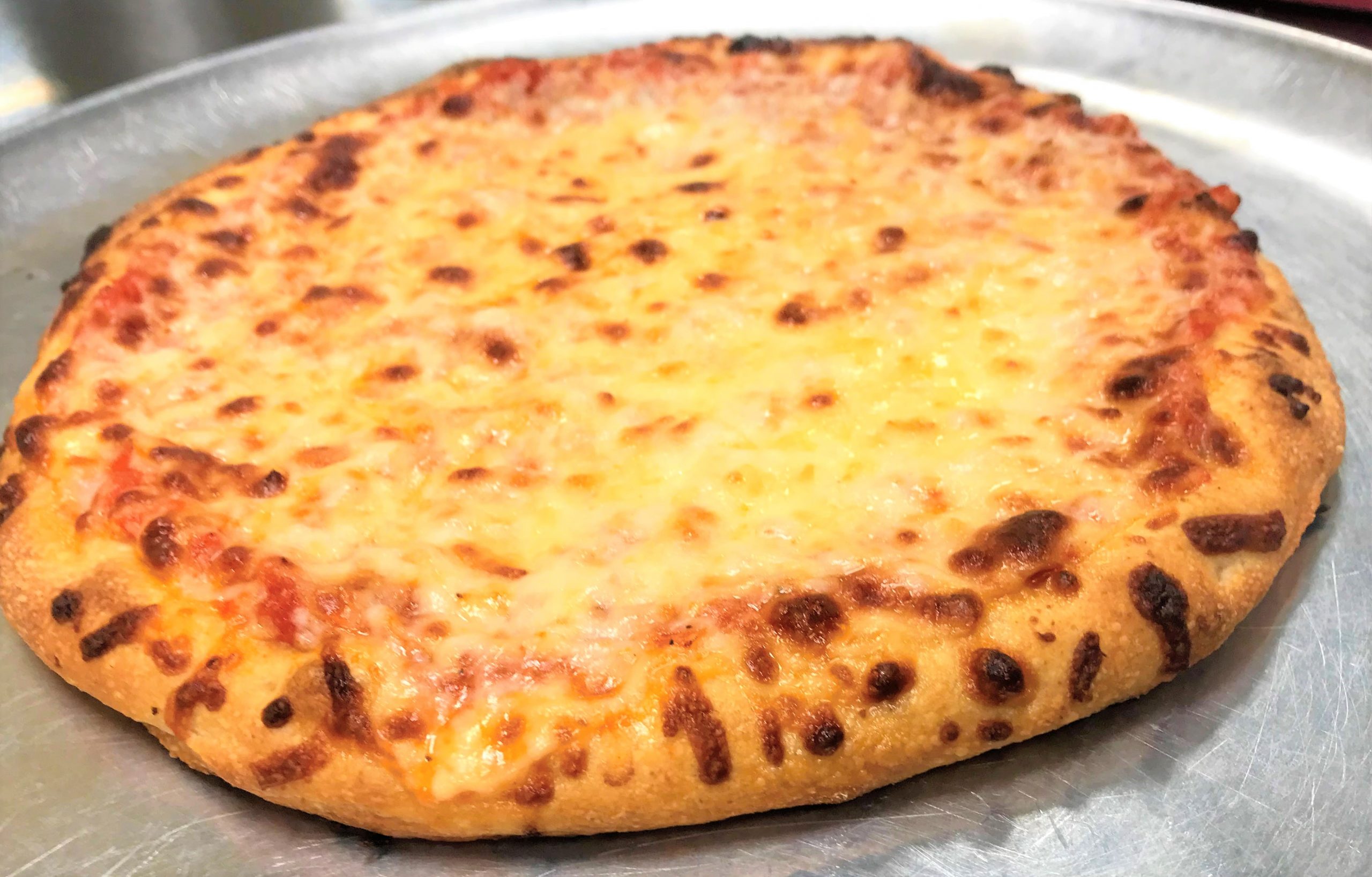
Sourdough Pizza Crust Recipe
Ingredients
- 2 ½ cups Bread Flour 10oz, 300g
- ¾ cup Water 6oz,170g
- 1 cup Sourdough Starter 8oz, 225g
- 1 teaspoon Salt 0.25oz, 7g
Instructions
- Into a large bowl, pour the water measurement. Add the sourdough starter, bread flour measurement, and the salt.
- If you don't have a sourdough starter, you can combine 2 oz water and 2 oz flour with ½ teaspoon yeast. Stir well and continue recipe as written.
- Stir with a wooden spoon until you have a shaggy mass and there is no visible dry flour.
- Turn the dough out into a work surface and knead until smooth and elastic. About 5 minutes.
- Let the dough rest in the warmest part of your kitchen until doubled in size. ( about 4-6 hours)
- Turn dough out onto a floured work surface. Divide into 3 individual crusts or 1 large crust.
- Gently round the dough into balls. Cover and allow to rest at least 20 minutes before shaping.
- To bake immediately transfer shaped crust onto a piece of parchment and top with your choice of sauce, cheese, meats, or veggies. Bake at 450°.10-15 minutes for small crust and 20- 25 minutes for large crust.
- To par-bake pizza: Shape crust and place it on a sheet pan. Bake at 400° for 8 minutes. The dough will be cooked, but not brown. Allow to cool, then place in freezer zip locks and freeze until ready to use. Top and bake according to above directions and reduce time if needed. There is no need to defrost before baking.

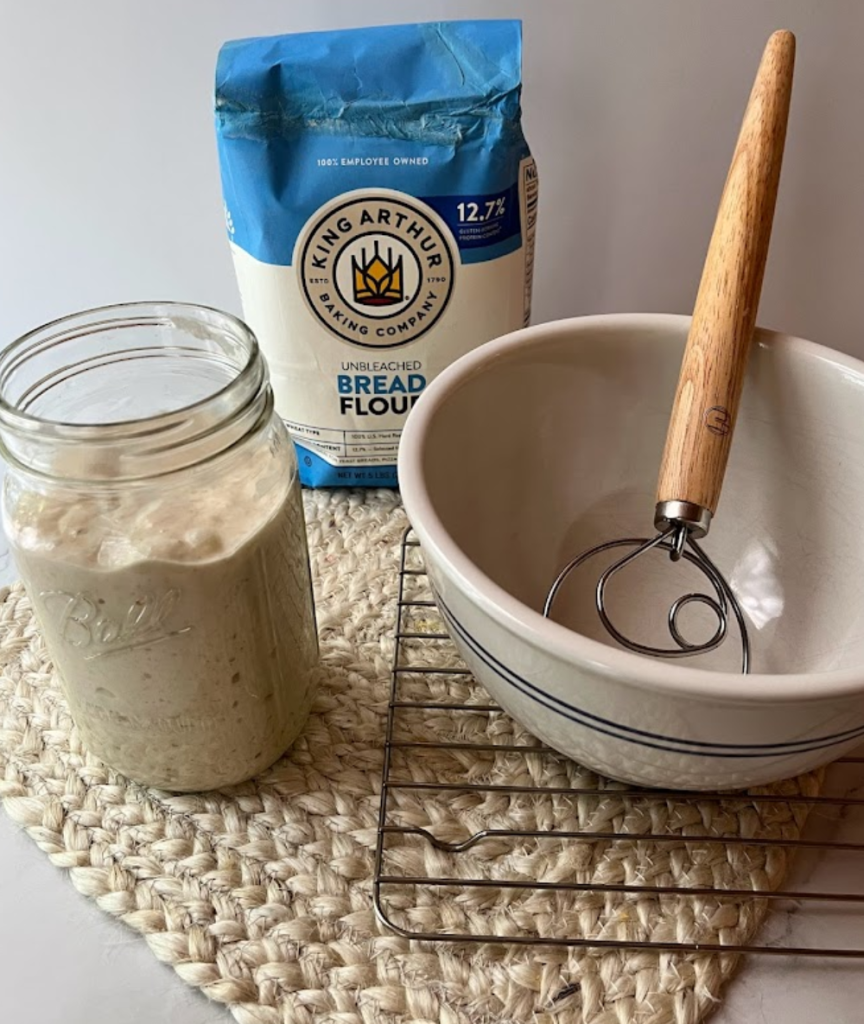
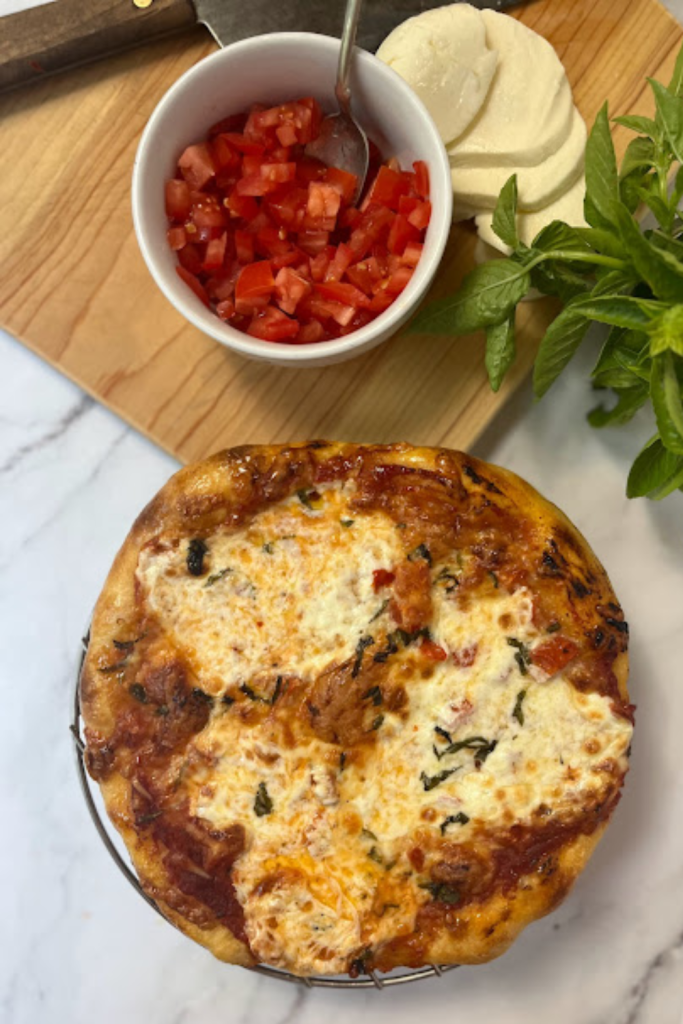
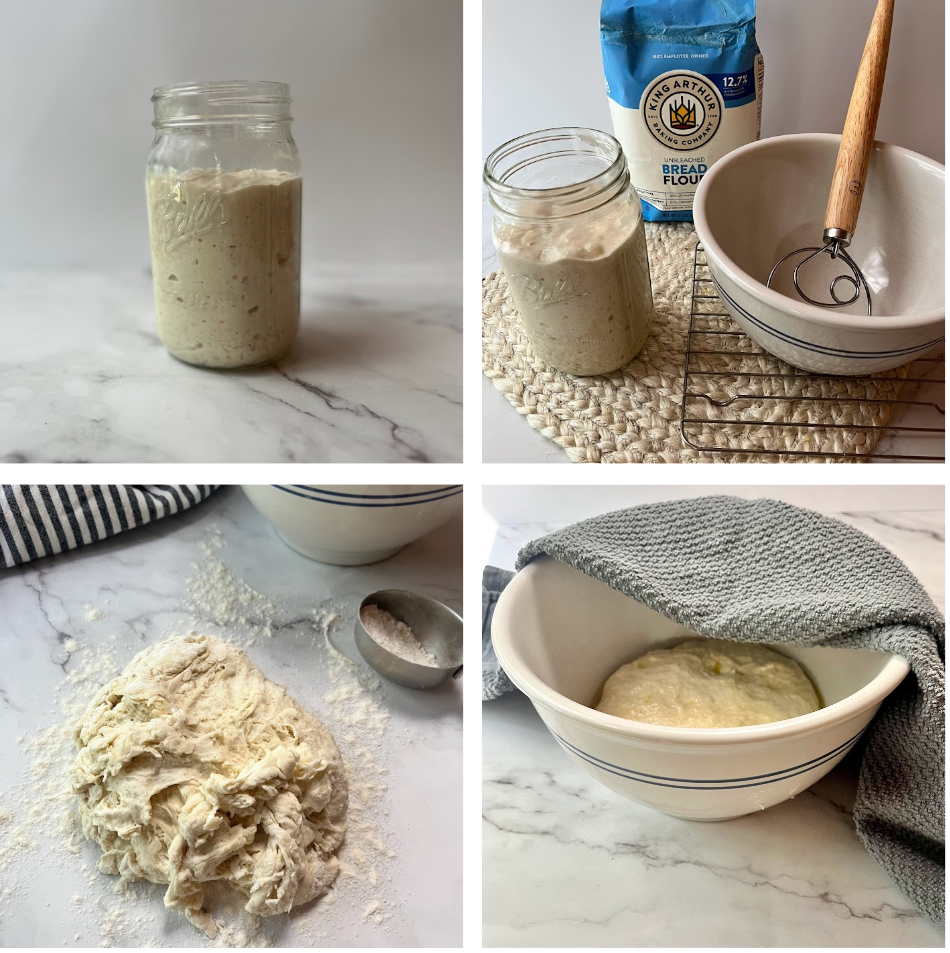
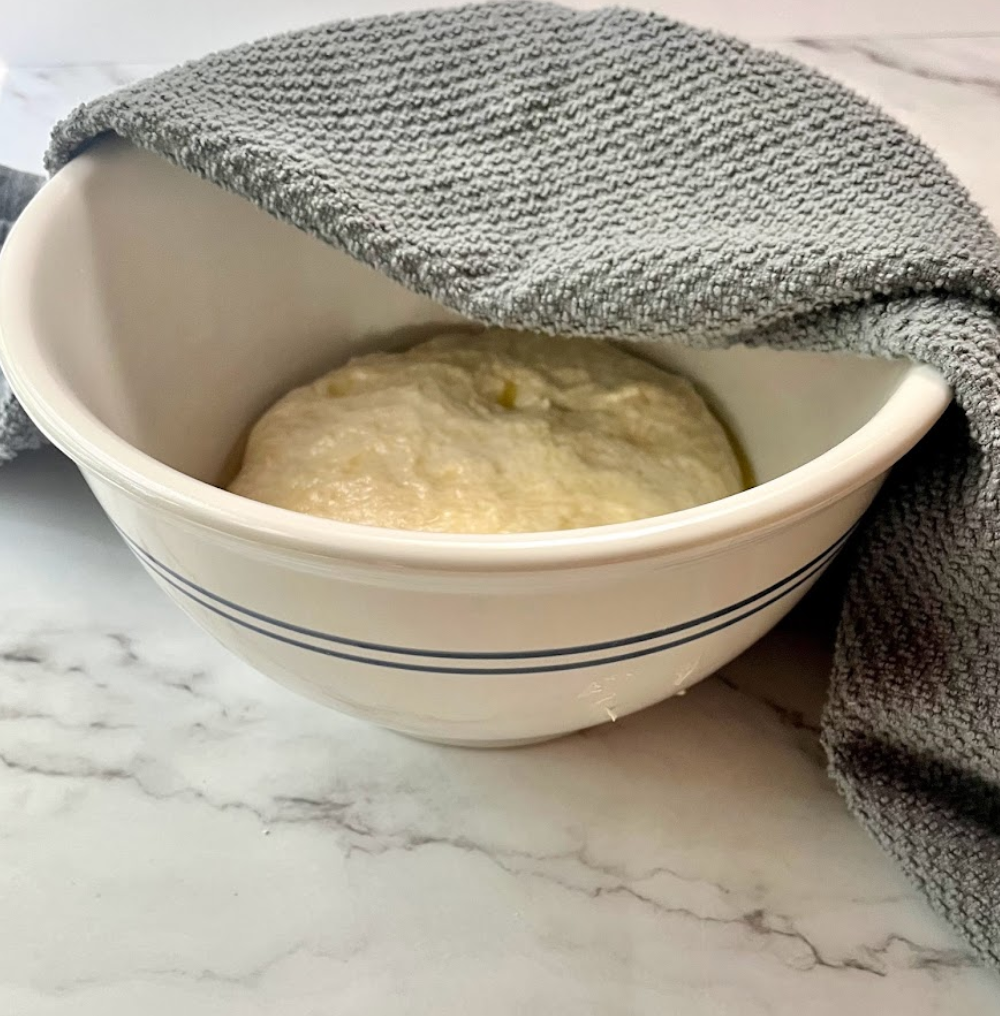

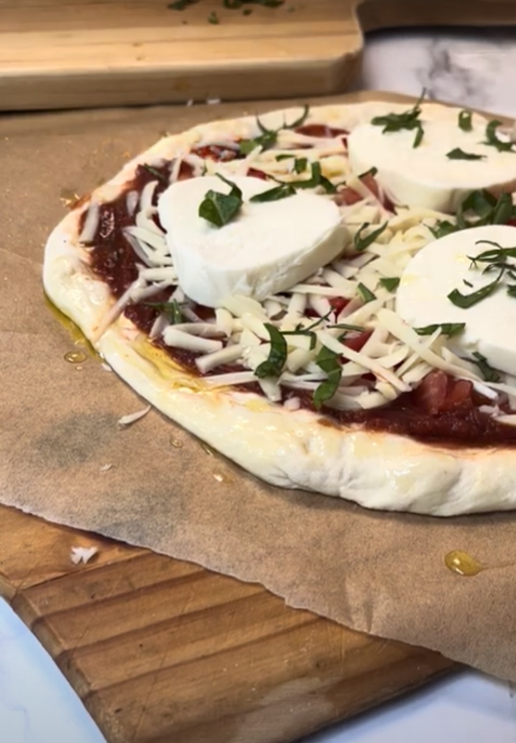
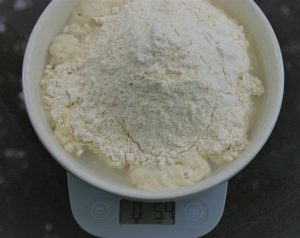
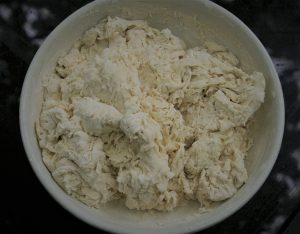
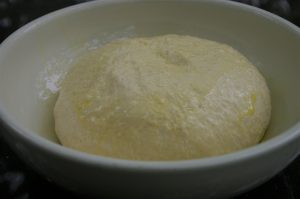
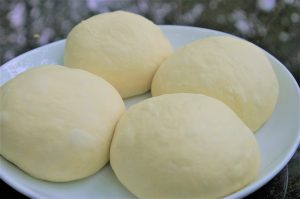
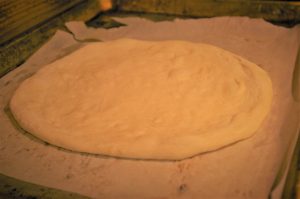
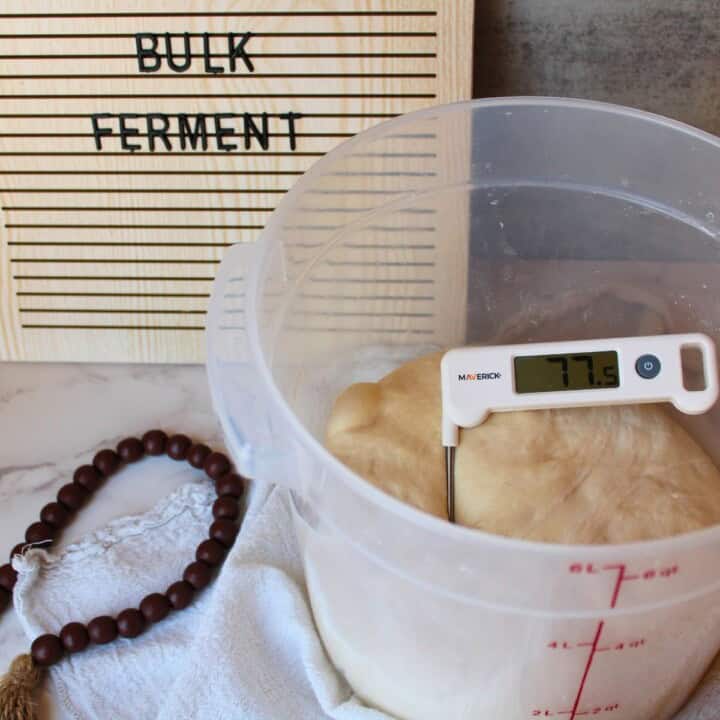
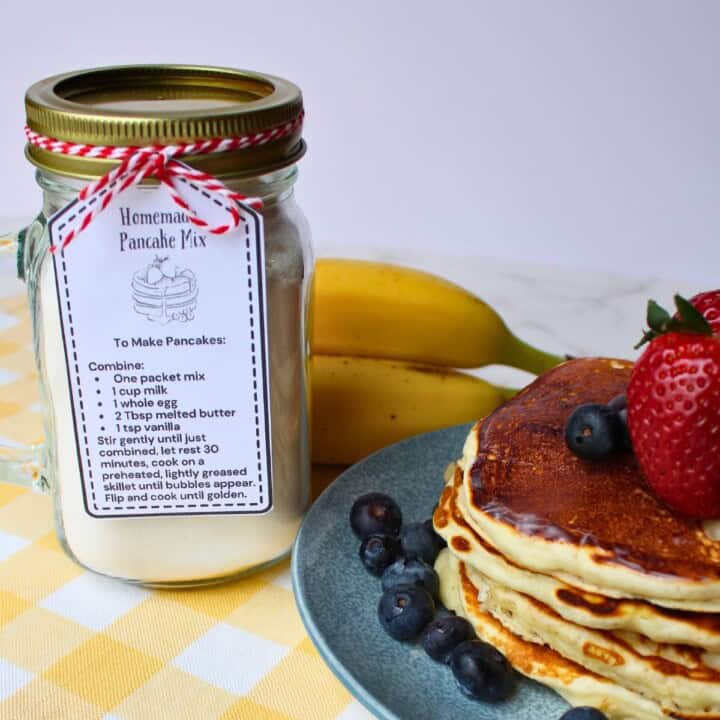
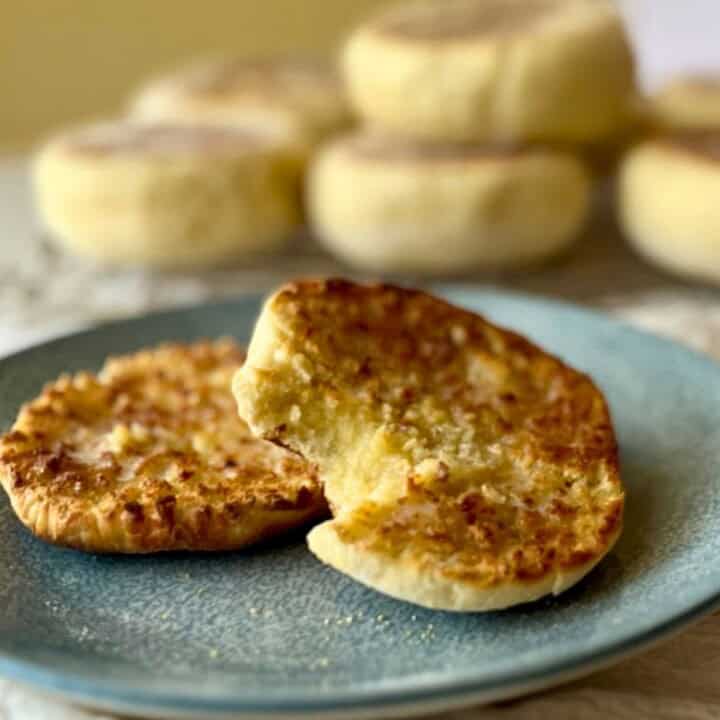
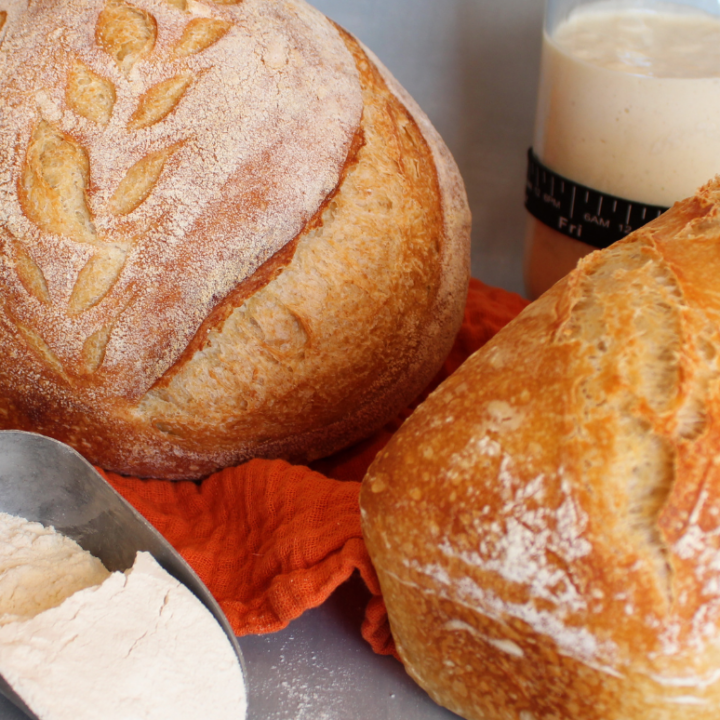
Kailey says
Can you freeze dough before after step 7 before cooking?
Better Baker says
I have not tried freezing the dough myself, but if you do, please let me know how it turns out! It could be a great way to save time. Happy baking!
Better Baker says
That sounds fantastic! Thank you for sharing your method and tips for making ahead. Par baking and then freezing the topped crusts is a brilliant idea, especially for busy nights or special occasions.Happy baking!
Nina says
@Autumn, Did you refrigerate your dough before or after the rise?
Dawn says
Turned out great and so easy compared to others I have tried. I make it for company often. Everyone raves about it.
My only suggestion is that you update the conversions to grams for 2x and 3x the recipe. They do not change when I click on them. The US measurements update when the 2x and 3x are touched.
Better Baker says
Thank you so much! I'm thrilled to hear the recipe turned out great and that it's a hit with your company! I appreciate your feedback about the gram conversions not updating—I’m working on an update to fix that. Stay tuned! 😊
Sheryl says
@Michele C, I had a hard time with my starter until I understood the feeding process. My friend recommended a 1:2:2 ratio of starter, water, flour. It works great for me and I have good results. Best of luck to you.
Bri says
Love the taste of the dough, but I keep getting a tough bottom! I’m preheating the oven with the pizza stone and preparing the pizza on parchment paper to put in the oven when preheated. Any suggestions?
Daniell says
Turned out great! Slightly altered recipe to make a gluten free crust as well. Delicious! Thank you!
Brooke says
How long can you keep the dough in the refrigerator until ready to use?
Sheryl Underwood says
@Daniell,
I would lIke directions on gf alternative if you can share.
Thank you
Jen says
@Michele C, is it thinner than others? If so, try feeding it using 1/2 cup starter, 1/2 cup flour, and less than 1/2 cup of water a few times.
Arden says
Loved this recipe! Delicious and easy, the dough was easy to roll out. I added some garlic powder and dried basil to the dough as I added the flour and it worked really well!
Better Baker says
Thank you so much! I'm thrilled you loved the recipe! Adding garlic powder and dried basil sounds like such a flavorful twist—great idea!
Better Baker says
Great question! You can usually keep the dough in the refrigerator for up to 24-48 hours. Letting it rest longer can sometimes even enhance the flavor! Just be sure to bring it to room temperature before using.
Better Baker says
Thank you for sharing! I'm so glad it turned out great. Your gluten-free twist sounds amazing—well done!
Maria says
Woooooow! I made 5 large pizzas last night with this recipe and they turned out amazing! I prepped them the night before popped them into the fridge then brought out the next day to come to room temp to shape into pizzas and wow! They were a huge hit!
Daria says
Are we using sourdough discard or active starter for this recipe. I would like to make 16 inch pizza pies, but don’t know how much I need to double or triple this recipe in order to do so.
Better Baker says
This recipe makes one large pizza (about 14-16 inches, depending on how long you let the dough rest and relax the gluten).
It uses active sourdough, but if you're looking for a sourdough discard version, you can find that recipe here: https://betterbakerclub.com/sourdough-discard-recipes/
Susie says
I made this today per the recipe, but the dough was so loose that we had to turn it into focaccia because it couldn’t be divided for pizza. Should it have been more than 300 grams of flour?